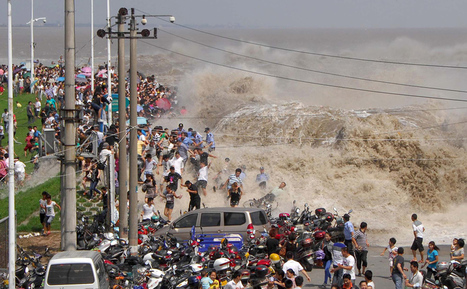For hundreds of years, on the eighth month of the lunar calendar, people have gathered along the shores of China’s Qiantang River at the head of Hangzhou Bay to witness the waves of its famous bore tide. Higher-than-normal high tides push into the harbor, funneling into the river, causing a broad wave that can reach up to 30 feet high. If the waves surge over the banks, spectators can be swept up, pushed along walkways or down embankments. Below, I’ve gathered images from the past few years of the Qiantang bore tides.
Research and publish the best content.
Get Started for FREE
Sign up with Facebook Sign up with X
I don't have a Facebook or a X account
Already have an account: Login
 Your new post is loading... Your new post is loading...
 Your new post is loading... Your new post is loading...
|
Jessica Martel's curator insight,
September 5, 2018 3:31 PM
"While China still ranks far behind the United States in foreign agricultural investments, its interest in farms abroad has prompted concerns about putting too much of America’s food supply in foreign hands."
Exporting goods is great for the US economy. We make money off of the goods that other countries are not able to get locally. What I don't understand is why would we literally sell our ability to export and better our economy? Sure, the Chinese owners of the farms that are on american soil will have to pay taxes on their land; in my eyes this is the only profit that america is able to make off of the farm.This is crazy to me and doesn't make sense. China already imports so many things to the US that we pay them for. NOW we are giving them our food and money.After the initial buy of the land.... its as good as dead to america. What next? Do we pay China for the goods they produced on our land. This is a great example of both good and bad globalization. This benefits China immensely they get to use other land they don't have access too.The US looses land,food and money. |














Tital bores - the values of water